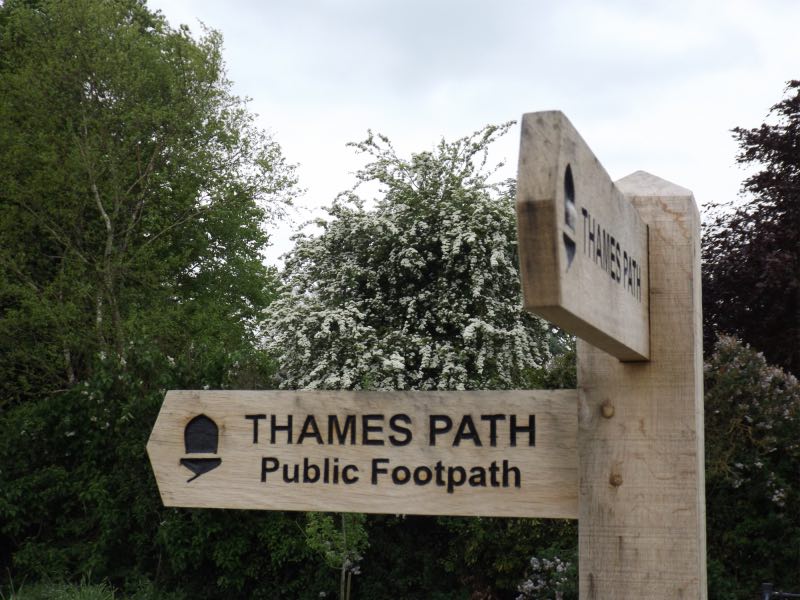
This coming weekend will see the 25th anniversary of the Thames Path’s inauguration writes Leigh Hatts.
On 24 July 1996 I joined David Sharp to walk downstream through Greenwich to the Thames Barrier.
As we turned into Crane Street, behind the Trafalgar Tavern, we found that the narrow passage had been decorated for the occasion.
Our arrival at the Barrier marked the start of the opening ceremony.
The late David Sharp was the Ramblers’ Association Thames expert who had produced the first guide to walking from London to the Source in Gloucestershire. He was a crucial part of the RA campaign to get a national trail.
I had been in awe of him when in 1981 I started work as the Thames Walk Field Officer.
I was reporting to the Countryside Commission and given a desk at Thames Water in Reading. My task was to spend a year writing a feasibility study for the ‘Thames Walk’.
On 1 June I started out from the Lion on the end of Westminster Bridge and headed upstream. My wife Marion and baby son James were with me for a short distance.
After that I was in my own as a I sought to meet every riparian owner and riverside council.
Most council boundaries run along the middle of the river and I soon found that what happened on the edge of a council area was often not a priority.
David Sharp’s publication was invaluable but there were still huge obstacles to overcome.
London lacked stretches of riverside path and so the Jubilee Walkway signs were the best guide for weaving one’s way along the Thames.
The towpath starts at Putney but it was not continuous.
The path at Windsor was closed and only later did the Crown Estate provide the present alternative on the Datchet side.
There were small problems around Maidenhead and Cookham which were eventually resolved by East Berks Ramblers footpath secretary Margaret Bowdery who is one of the many who made the Thames Path possible. Margaret died in 2017.
At Purley, where the towpath changes sides without a ferry, provision had already been made for a path above the river but as houses were built opposition from new residents grew. That is why you now have to walk through an estate rather than drop down under the railway as older residents had proposed.
At Dorchester there was a long debate over whether to follow the towpath as much as possible or go through woodland below Wittenham Clumps. Dorchester won.
The towpath ends at Inglesham and as many know it was only in recent years that the walk from there upstream to Cricklade has ceased to involve a very busy main road.
By the New Year I had reached Gloucestershire where I managed to negotiate agreement for a path to be near the infant Thames only to read of the landowner’s death a few weeks later .
Soon after I was cut off by snow in Cirencester for several days.
My recommendations submitted in July 1982 were not published immediately but after a pause the proposals were examined in detail and turned into a report for the Secretary of State by Jenny Blair.
In 1989 Environment Minister Virginia Bottomley announced that there would be a Thames Path national trail when she opened Temple Bridge which replaces a lost ferry near Bisham.
Two years after the path opened the first edition of Walking the Thames Path guide appeared. I wrote the upstream guide because I had started in the capital and knew that many like to discover where London’s river comes from. David Sharp wrote the downstream guide.
Regrets? I had suggested that the path should start further downstream. In the end the commissioners agreed on the Thames Barrier but it would have been cheaper in the long term to have seized the moment for Erith or even Margate a quarter of century ago.
I hope that the Thames Path can bring enjoyment rather than just be, as for too many it is, just a fundraising challenge.
Slow walking is the best way to appreciate our heritage of churches, pubs, villages and, best of all, the wonder of the ever changing nature by the water.
One should have time to pause and rest at David Sharp’s memorial seat at Barnes.
I had a unique job for one so young and I consider myself fortunate to have been able to continue being so intimate with the river during forty years of walking and writing.
